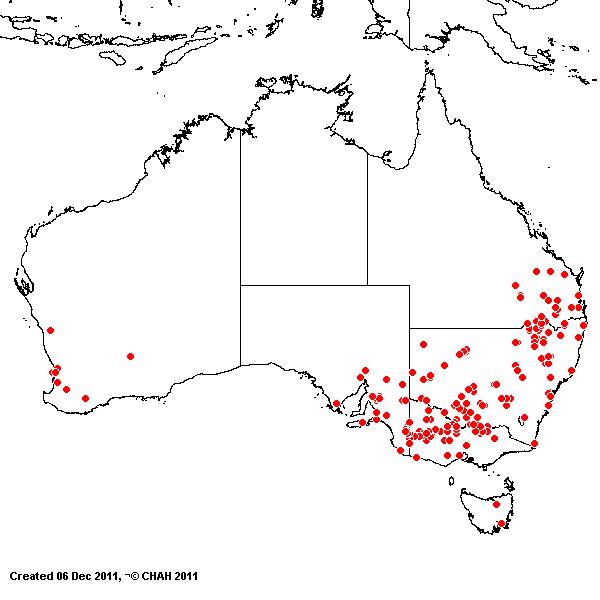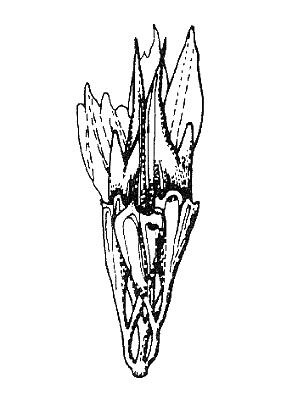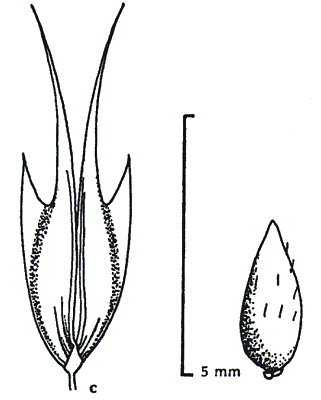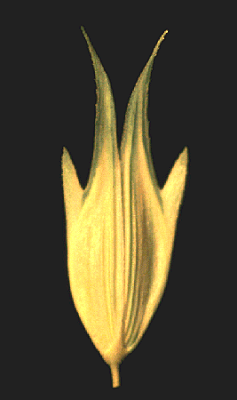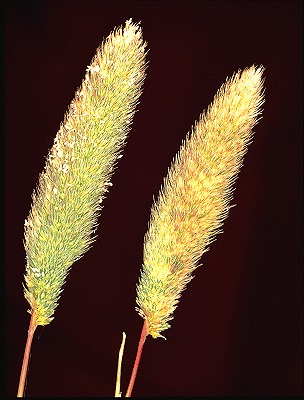Phalaris paradoxa* L. Sp. Pl. ed. 2, 1: 87 (1762).
Classification. (GPWG 2001) : Subfamily Pooideae. Tribe Poeae.
Type of Basionym or Protologue Information: LT: paradoxa HU (LINN-78.6). LT designated by Baldini & Jarvis, Taxon 40: 483 (1991).
Key references (books and floras): [1952] C.A.Gardner, Flora of Western Australia 1 Gramineae (26), [2002] D.Sharp & B.K.Simon, AusGrass, Grasses of Australia, [2006] J.Jessop, G.R.M.Dashorst, F.M.James, Grasses of South Australia (243), [2008] S.W.L.Jacobs, R.D.B.Walley & D.J.B.Wheeler, Grasses of New South Wales (339), [2009] A.Wilson (ed.). Flora of Australia, Vol 44A. Poaceae 2 (151).
Illustrations: [1952] C.A.Gardner, Flora of Western Australia 1 Gramineae (24 & 25, Pl. 4 & 5), [2006] J.Jessop, G.R.M.Dashorst, F.M.James, Grasses of South Australia (243, Fig. 187), [2008] S.W.L.Jacobs, R.D.B.Whalley & D.J.B.Wheeler, Grasses of New South Wales, 4th edn (338).
Habit. Annual. Culms erect or geniculately ascending, stature robust to moderate, 7–100 cm tall, 2–6 -noded. Ligule an eciliate membrane, 2–8 mm long, entire. Leaf-blades 3.3–28 cm long, 2–9 mm wide.
Inflorescence. Inflorescence solid, a panicle. Panicle oblong or obovate, (20–)40–75(–100) cm long, 1.5–2.5 cm wide.
Spikelets. Spikelets pedicelled or sessile, 1 in the cluster. Companion spikelets pedicelled, 6 in the cluster. Involucre composed of imperfect spikelets. Companion spikelets developed, containing empty lemmas, 4–6 mm long. Fertile spikelets 1 or more flowered, with 1 fertile floret, comprising 2 basal sterile florets, comprising 1 fertile floret(s), without rachilla extension, ovate, laterally compressed, 6.4–8 mm long.
Glumes. Glumes similar, thinner than fertile lemma. Lower glume subulate or ovate, chartaceous, keeled, 1-keeled, winged on keel, winged moderately, 3(–7) -nerved. Lower glume apex muticous. Upper glume ovate, 6.4–8 mm long, chartaceous, keeled, 1-keeled, winged on keel, 3(–7) -nerved. Florets. Basal sterile florets 2 or more.
Fertile lemma 2.5–3.5 mm long, keeled, 5 -nerved. Lemma surface glabrous or indumented. Palea 2 -nerved, without keels. Anthers 3. Grain 2.5 mm long.
Continental Distribution: Europe, Africa, Temperate Asia, Tropical Asia, Australasia, Pacific, North America, and South America.
Australian Distribution: Western Australia, South Australia, Queensland, New South Wales, Victoria, Tasmania.
Western Australia: Drummond. South Australia: Eastern, Eyre Peninsula, Northern Lofty, Murray, Southern Lofty, Kangaroo Island, South-eastern. Queensland: Burnett, Darling Downs, Leichhardt, Maranoa, Moreton, Wide Bay. New South Wales: North Coast, Central Coast, Northern Tablelands, Central Tablelands, North-Western Slopes, South-Western Slopes, North-Western Plains, South-Western Plains, North Far Western Plains. Victoria: Gippsland Plain, Lowan Mallee, Midlands, Murray Mallee, Riverina, Volcanic Plain, Wimmera. Tasmania: Midlands, East Coast.
Notes. Occasionally grown for fodder.
P. paradoxa is most closely allied to P. coerulescens.
Introduced. Southern and eastern mainland Australia - N.S.W., A.C.T., Vic., W.A., Qld and S.A. Introduced and naturalised in many countries, native to the Mediterranean. Usually in disturbed places, commonly a weed in irrigated and seasonally wet areas. Flowers Sept.-Feb. Fruits Oct.-Jan.

